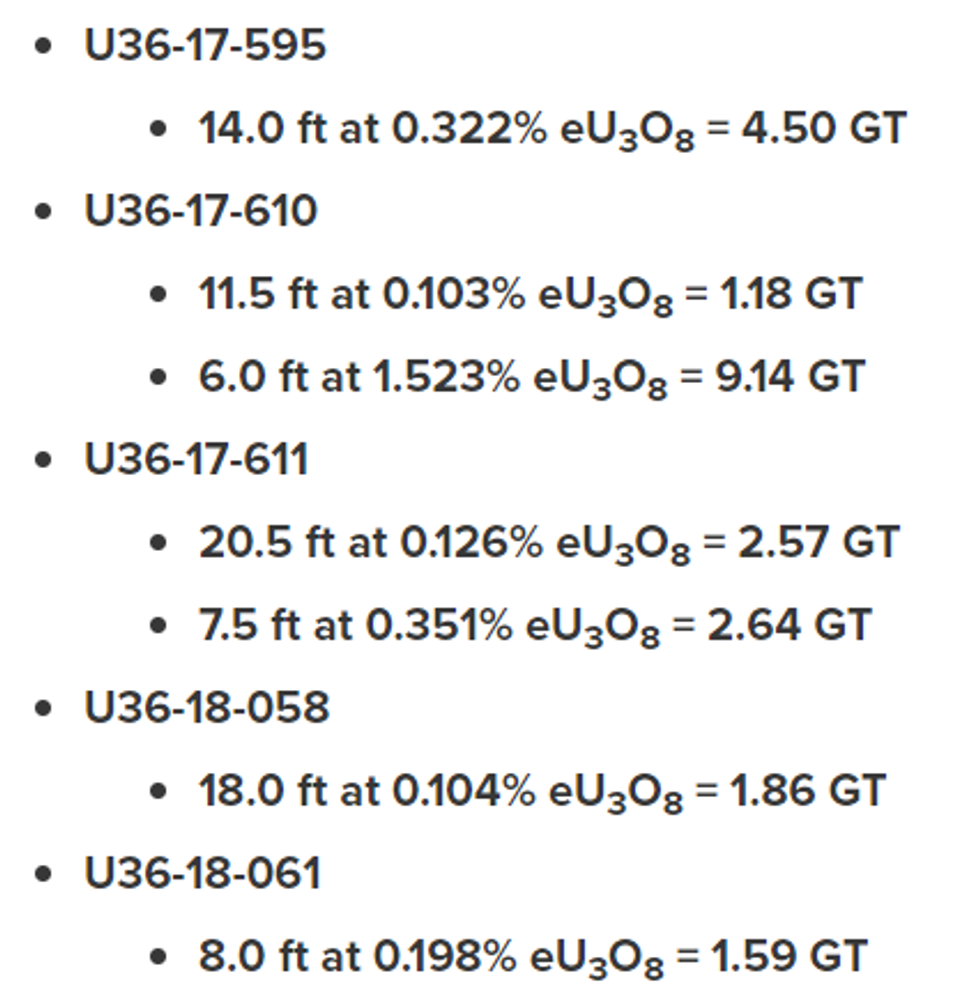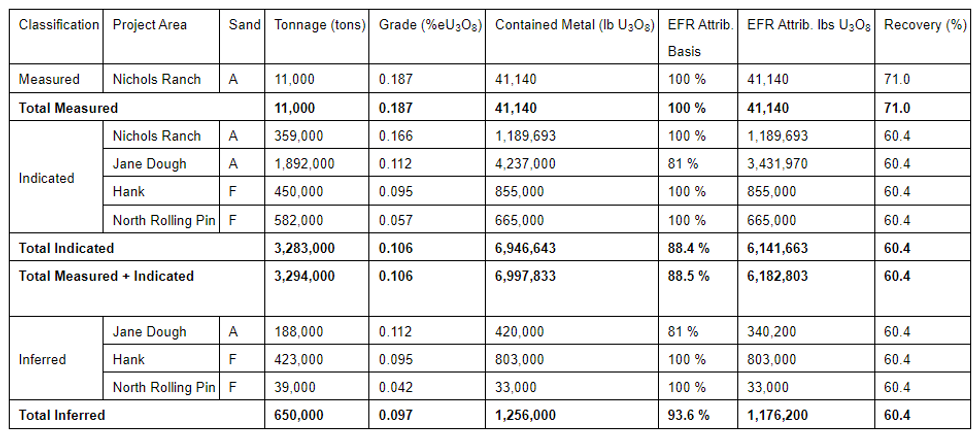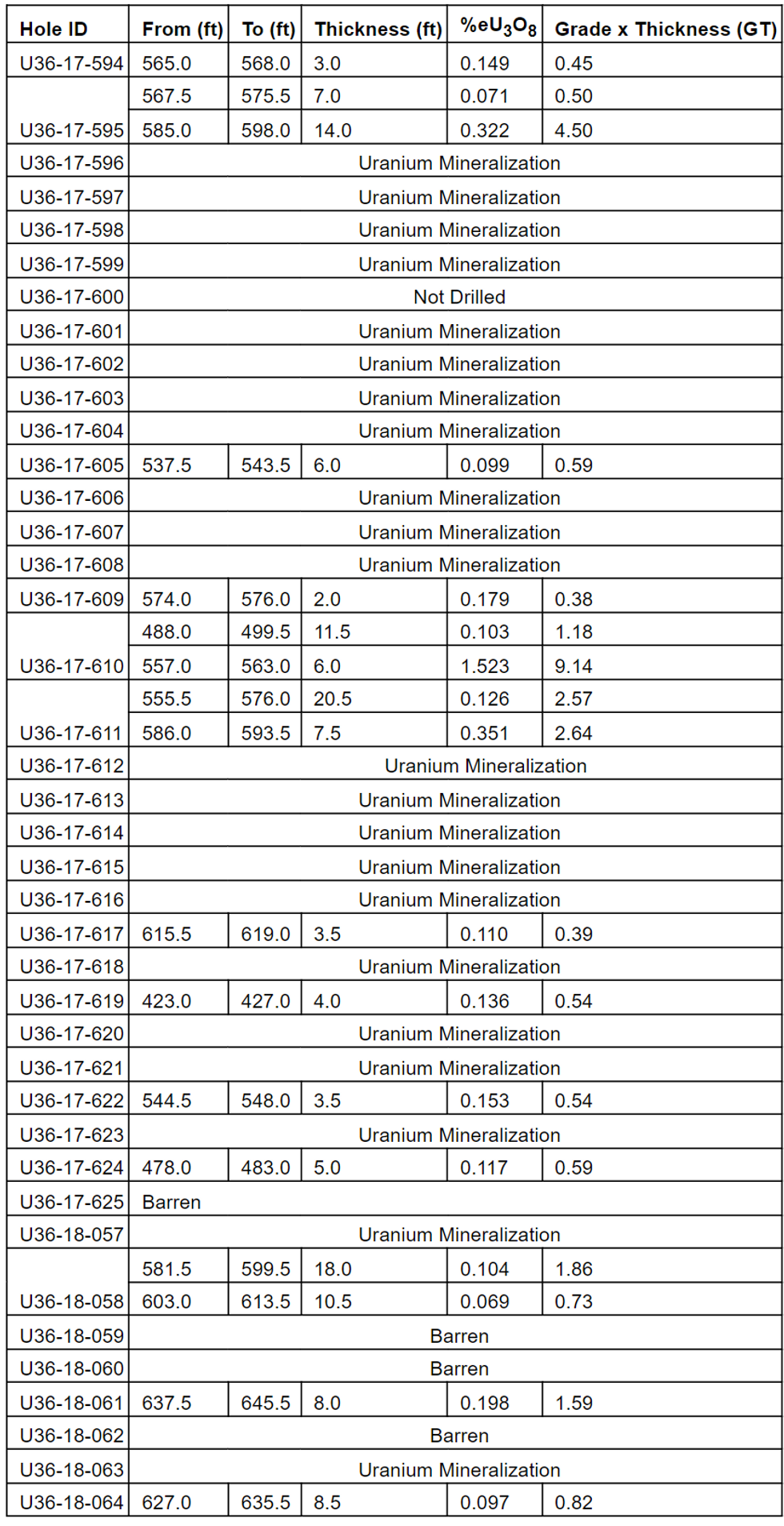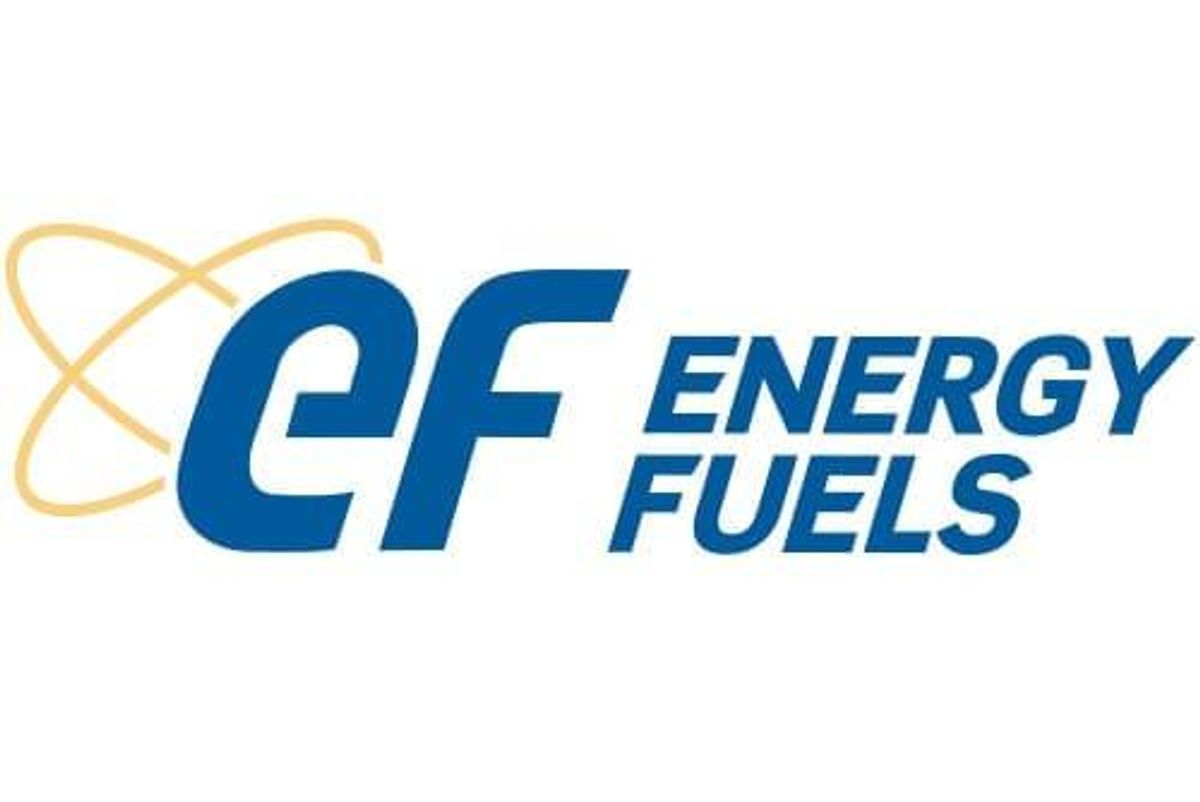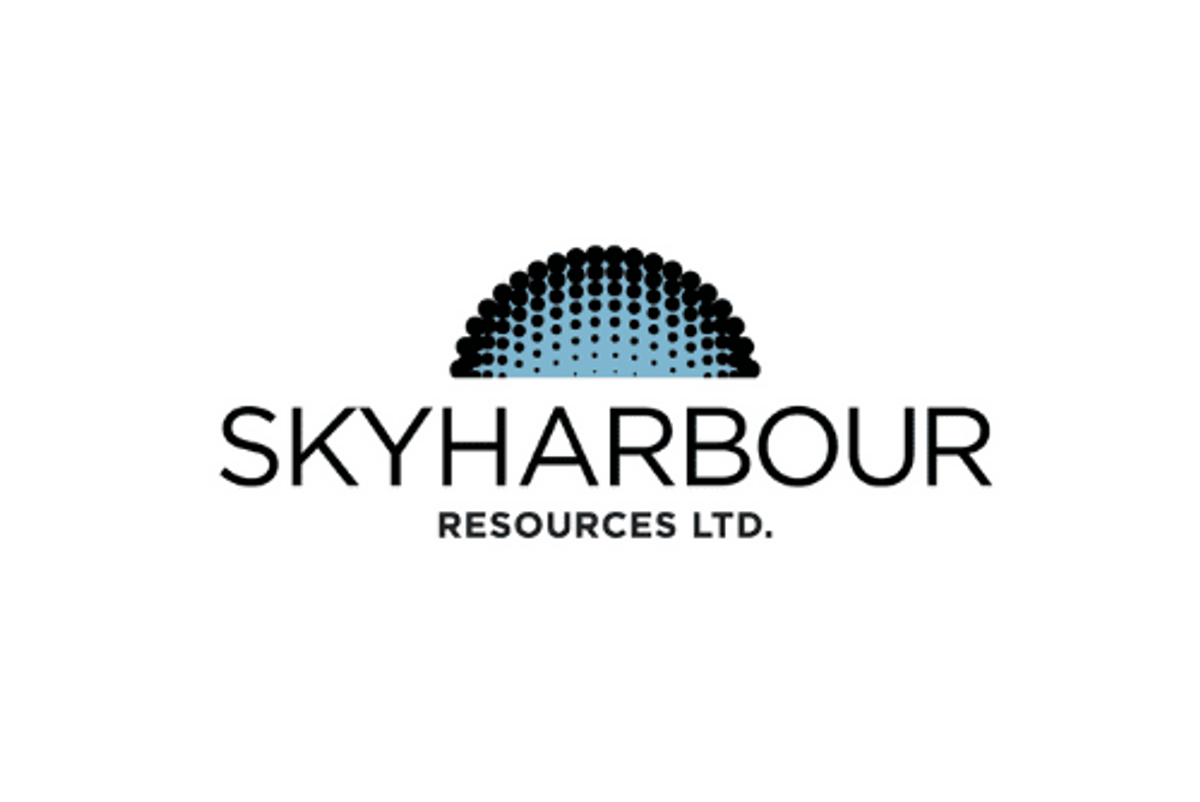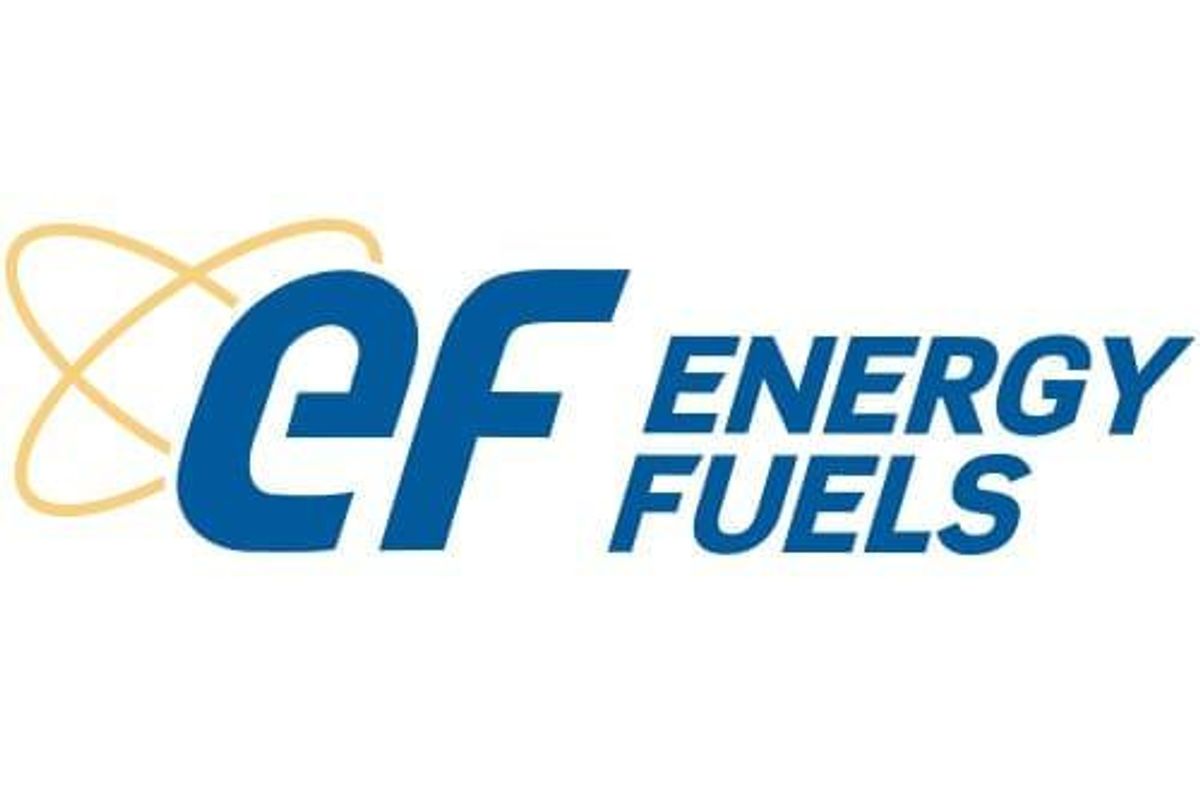
September 11, 2024
Energy Fuels Inc. (NYSE American: UUUU) (TSX: EFR), ("Energy Fuels", "EFR" or the "Company") an industry leader in uranium and rare earth elements production for the energy transition, today announced that its work to prepare for the restart of its Nichols Ranch in-situ recovery ("ISR") uranium mine 80 miles northeast of Casper, Wyoming in the Powder River Basin is advancing as planned, with initial pre-production drilling intercepts showing stronger mineralization than anticipated. The Company currently expects that the development of the remainder of its permitted Production Area 2 ("PA2") could be ready to commence production as early as July 1, 2025, with the start date based on market conditions.
Energy Fuels could quickly add uranium production from Nichols Ranch to its other operating conventional mines in Arizona and Utah. The Company also disclosed an additional uranium supply contract with a US nuclear energy utility in its Q2, 2024 quarterly report, continuing its commitment to the domestic uranium industry and demonstrating expanding offtake interest.
"We are very pleased with our progress to date in preparing Nichols Ranch for a potential restart of production in 2025, and these significant drilling results are exceeding our expectations and further demonstrate the strength of this project," said Mark Chalmers, president and CEO of Energy Fuels Inc. "This puts us one step closer on the path to meeting our projections, increasing our market share of the nuclear fuel supply chain, and potentially expanding our uranium resources."
With a licensed annual capacity of two million pounds of uranium, the fully licensed, permitted and constructed Nichols Ranch ISR facility is a priority resource in the Company's development pipeline. To restart production, the Company is performing delineation drilling and, based on that delineation drilling, plans to advance new header houses and install new well-fields in its permitted PA2 area at the mine. In addition to this delineation drilling, the Company has been advancing the restart by overhauling the on-site deep disposal well earlier this year and making some capital improvements to the existing plant.
Dan Kapostasy, Vice President, Technical Services stated, "We recently drilled 39 out of the planned 125 delineation holes at Nichols Ranch, with five that significantly exceeded expectations and the rest consistent with anticipated results. As we continue our exploration, we will better identify the location of resources within the site to allow us to optimize wellfield design ahead of a final mining decision, anticipated by the end of the year."
Highlights
Pre-development drilling activities at PA2 at Nichols Ranch have completed 39 drill holes to date. All but four holes have uranium mineralization and five have encountered mineralization greater than 1.0 GT.
The Company anticipates updating the Nichols Ranch Technical Report, which will include these significant drill intercepts, once the drilling campaign is completed later this year.
Following this drilling campaign, the Company intends to drill approximately 152 holes on its Collins Draw area, a southeastern extension of its Jane Dough mineralized trend located in Sections 35 and 36, T43N, R76W, and Sections 1, 2 & 12, T42N, R76W, Campbell County, Wyoming. Once complete, these holes, along with historical holes drilled by Cleveland Cliffs and American Nuclear will be used to estimate an NI 43-101/S-K 1300 compliant mineral resource, which would be added to the existing mineral resource at the Nichols Ranch Project.
Technical Details
The current mineral resource estimate for the Nichols Ranch area (including the Jane Dough, Hank and North Rolling Pin areas, but excluding Collins Draw) of the Nichols Ranch Complex is given below, and details can be found in the Technical Report on the Nichols Ranch Project, Campbell and Johnson Counties, Wyoming USAdated February 22, 2022 and effective December 31,2021, as amended February 8, 2023, and prepared by Grant A. Malensek, M. Eng., P. Eng., Mark Mathisen, C.P.G., Jeremy Scott Collyard, PMP, MMSA QP, each a Qualified Person employed by SLR, Jeffrey L. Woods, MMSA QP, a Qualified Person employed by Woods Process Services, and Phillip E. Brown, C.P.G., R.P.G., a Qualified Person employed by Consultants In Hydrogeology (the "Nichols Ranch Technical Report Summary").
Current Nichols Ranch Project Mineral Resource Estimate – Effective December 31, 2021
Notes:
- SEC S-K 1300 definitions were followed for all Mineral Resource categories. These definitions are also consistent with CIM (2014) definitions in NI 43-101.
- Measured Mineral Resource includes reduction for production through December 31, 2021.
- Mineral Resources are 100% attributable to EFR for Nichols Ranch, Hank, and North Rolling Pin, and are in situ. Mineral Resource estimates are based on a GT cut-off of 0.20 %-ft.
- Mineral Resources are 81% attributable to EFR and 19% attributable to United Nuclear Corp in parts of Jane Dough, and are in situ.
- Mineral Resource estimates are based on a GT cut-off of 0.20 %-ft
- The cut-off grade is calculated using a metal price of $65/lb U3O8, operating costs of $19.28/lb U3O8, and 60.4% recovery (based on 71% process recovery and 85% under wellfield)
- Mineral Resources are based on a tonnage factor of 15.0 ft3/ton (Bulk density 0.0667 ton/ft3 or 2.13 t/m3).
- Mineral Resources that are not Mineral Reserves do not have demonstrated economic viability.
- Numbers may not add due to rounding
All grades reported in this press release are "equivalent" eU3O8 grades as they were calculated from calibrated downhole gamma logging of the drill holes. The downhole probe was calibrated at the U.S. Department of Energy test pits located in Casper, Wyoming by Energy Fuels staff and verified on site by Century Geophysical Corporation. All drill holes reported are vertical and were verified as vertical using downhole deviation logging. All thicknesses reported are true thicknesses.
Qualified Person Statement
The scientific and technical information disclosed in this news release was reviewed and approved by Daniel D. Kapostasy, PG, Registered Member SME and Vice President, Technical Services for the Company, who is a "Qualified Person" as defined in S-K 1300 and National Instrument 43-101.
About Energy Fuels
Energy Fuels is a leading US-based critical minerals company. The Company, as a leading producer of uranium in the United States, mines uranium and produces natural uranium concentrates that are sold to major nuclear utilities for the production of carbon-free nuclear energy. Energy Fuels recently began production of advanced rare earth element ("REE") materials, including mixed REE carbonate in 2021, and commenced production of commercial quantities of separated REEs in 2024. Energy Fuels also produces vanadium from certain of its projects, as market conditions warrant, and is evaluating the recovery of radionuclides needed for emerging cancer treatments. Its corporate offices are in Lakewood, Colorado, near Denver, and substantially all its assets and employees are in the United States. Energy Fuels holds two of America's key uranium production centers: the White Mesa Mill in Utah and the Nichols Ranch in-situ recovery ("ISR") Project in Wyoming. The White Mesa Mill is the only conventional uranium mill operating in the US today, has a licensed capacity of over 8 million pounds of U3O8 per year, and has the ability to produce vanadium when market conditions warrant, as well as REE products, from various uranium-bearing ores. The Nichols Ranch ISR Project is on standby and has a licensed capacity of 2 million pounds of U3O8 per year. The Company recently acquired the Bahia Project in Brazil and entered into a joint venture agreement to develop the Donald Project in Australia, each of which is believed to have significant quantities of titanium (ilmenite and rutile), zirconium (zircon) and REE (monazite) minerals. In addition to the above production facilities, Energy Fuels also has one of the largest NI 43-101 compliant uranium resource portfolios in the US and several uranium and uranium/vanadium mining projects on standby and in various stages of permitting and development. The primary trading market for Energy Fuels' common shares is the NYSE American under the trading symbol "UUUU," and the Company's common shares are also listed on the Toronto Stock Exchange under the trading symbol "EFR." Energy Fuels' website is www.energyfuels.com.
Cautionary Note Regarding Forward-Looking Statements
This news release contains certain "Forward Looking Information" and "Forward Looking Statements" within the meaning of applicable United States and Canadian securities legislation, which may include, but are not limited to, statements with respect to: any expectation that the Company will maintain its position as a leading U.S.-based critical minerals company or as a leading producer of uranium in the U.S.; any expectation with respect to timelines to production; any expectation as to rates or quantities of production; any expectation that the development of the remainder of PA2 could be ready to commence production as early as July 1, 2025, based on market conditions; any expectation that the Company's progress to date and/or delineation drilling results to date puts the Company one step closer on the path to meeting its projections, increasing its market share of the nuclear fuel supply chain, and/or potentially expanding its uranium resources; any expectation that the Company anticipates updating the Nichols Ranch Technical Report; any expectation that, following the current delineation drilling campaign, the Company will drill approximately 152 holes to convert the historic resource at the Collins Draw area to a current NI 43-101/S-K 1300 mineral resource, or that any such mineral resource would be added to the mineral resource at the Nichols Ranch Project; any expectation that the Company's evaluation of radioisotope recovery at the Mill will be successful; and any expectation as to the accuracy of mineral resource estimates or that any mineral resources will actually be mined. Generally, these forward-looking statements can be identified by the use of forward-looking terminology such as "plans," "expects," "does not expect," "is expected," "is likely," "budgets," "scheduled," "estimates," "forecasts," "intends," "anticipates," "does not anticipate," or "believes," or variations of such words and phrases, or state that certain actions, events or results "may," "could," "would," "might" or "will be taken," "occur," "be achieved" or "have the potential to." All statements, other than statements of historical fact, herein are considered to be forward-looking statements. Forward-looking statements involve known and unknown risks, uncertainties and other factors which may cause the actual results, performance or achievements of the Company to be materially different from any future results, performance or achievements express or implied by the forward-looking statements. Factors that could cause actual results to differ materially from those anticipated in these forward-looking statements include risks associated with: commodity prices and price fluctuations; engineering, construction, processing and mining difficulties, upsets and delays; permitting and licensing requirements and delays; changes to regulatory requirements; legal challenges; the availability of feed sources for the Mill; competition from other producers; public opinion; government and political actions; market factors; market prices and demand for uranium; and the other factors described under the caption "Risk Factors" in the Company's most recently filed Annual Report on Form 10-K, which is available for review on EDGAR at www.sec.gov/edgar, on SEDAR+ at www.sedarplus.ca, and on the Company's website at www.energyfuels.com. Forward-looking statements contained herein are made as of the date of this news release, and the Company disclaims, other than as required by law, any obligation to update any forward-looking statements whether as a result of new information, results, future events, circumstances, or if management's estimates or opinions should change, or otherwise. There can be no assurance that forward-looking statements will prove to be accurate, as actual results and future events could differ materially from those anticipated in such statements. Accordingly, the reader is cautioned not to place undue reliance on forward-looking statements. The Company assumes no obligation to update the information in this communication, except as otherwise required by law.
nysemkt:uuuuvanadium investinguranium investinguranium miningvanadium stocksvanadium explorationuranium explorationvanadium mininguranium stocks
UUUU
The Conversation (0)
29 May 2024
Energy Fuels
America’s Leading Producer of Critical Materials for the Clean Energy Transition
America’s Leading Producer of Critical Materials for the Clean Energy Transition Keep Reading...
23 May 2025
Precious Metals & Critical Minerals Hybrid Investor Conference: Presentations Now Available for Online Viewing
Virtual Investor Conferences, the leading proprietary investor conference series, today announced the presentations from Precious Metals & Critical Minerals Hybrid Virtual Investor Conference held May 22 nd are now available for online viewing. VIEW PRESENTATIONS HERE The company presentations... Keep Reading...
16 May 2025
Precious Metals & Critical Minerals Hybrid Investor Conference Agenda Announced for May 22nd
Virtual Investor Conferences, the leading proprietary investor conference series, today announced the agenda for the Precious Metals & Critical Minerals Hybrid Virtual Investor Conference. Individual investors, institutional investors, advisors, and analysts are invited to attend. This in-person... Keep Reading...
14 April 2025
Western Uranium & Vanadium Corp. Announces Ore Purchase Agreement
Western Uranium & Vanadium Corp. (CSE: WUC) (OTCQX: WSTRF) (" Western " or the " Company ") is pleased to announce that the Company has entered into an Ore Purchase Agreement ("Agreement") with Energy Fuels Inc. (NYSE American: UUUU) (TSX:EFR). Western plans to commence hauling around the... Keep Reading...
05 December 2024
Energy Fuels and Madagascar Government Execute Memorandum of Understanding to Further Advance Toliara Critical Mineral Project in Madagascar
Energy Fuels Inc. (NYSE American: UUUU) (TSX: EFR) ("Energy Fuels" or the "Company"), a leading U.S. producer of uranium, rare earth elements ("REE"), and critical minerals, is pleased to announce that it has entered into a Memorandum of Understanding (the "MOU") with the Government of... Keep Reading...
05 December 2024
Energy Fuels and Madagascar Government Execute Memorandum of Understanding to Further Advance Toliara Critical Mineral Project in Madagascar
Energy Fuels Inc. (NYSE American: UUUU) (TSX: EFR) (" Energy Fuels " or the " Company "), a leading U.S. producer of uranium, rare earth elements (" REE "), and critical minerals, is pleased to announce that it has entered into a Memorandum of Understanding (the " MOU ") with the Government of... Keep Reading...
12 January
Eagle Energy Metals Engages BBA USA Inc. to Help Advance Aurora Toward Pre-Feasibility
Targeted Drill Program Aimed at Advancing Aurora Uranium Project as Company Progresses Toward Planned Nasdaq Listing
Eagle Energy Metals Corp. (“Eagle” or the “Company”), a next-generation nuclear energy company with rights to the largest open pit-constrained, measured and indicated uranium deposit in the United States and proprietary Small Modular Reactor (“SMR”) technology, is pleased to announce today that... Keep Reading...
07 January
Denison Mines Poised to Begin Construction on Phoenix Uranium Project
Denison Mines (TSX:DML,NYSEAMERICAN:DNN) is ready to move forward with construction of its flagship Phoenix in-situ recovery (ISR) uranium project in Northern Saskatchewan, pending final regulatory approvals.The project, which is part of the Wheeler River property and expected to begin... Keep Reading...
06 January
US Awards US$2.7 Billion to Expand Domestic Uranium Enrichment
The US government on Monday (January 5) allocated billions of dollars to revive domestic uranium enrichment, accelerating Washington's efforts to reduce reliance on foreign supply.The US Department of Energy (DOE) said it will award a total of US$2.7 billion over the next decade to three... Keep Reading...
23 December 2025
Lobo Tiggre: Supply Tight, Demand Strong, What's Next for the 2026 Uranium Market?
Lobo Tiggre, CEO of IndependentSpeculator.com, described uranium’s key role in providing baseload energy, a narrative that is only being heightened by added artificial intelligence data center and electric vehicle (EV) demand projections. “The use case is baseload power. There’s no substitution,... Keep Reading...
Latest News
Interactive Chart
Latest Press Releases
Related News
TOP STOCKS
American Battery4.030.24
Aion Therapeutic0.10-0.01
Cybin Corp2.140.00
